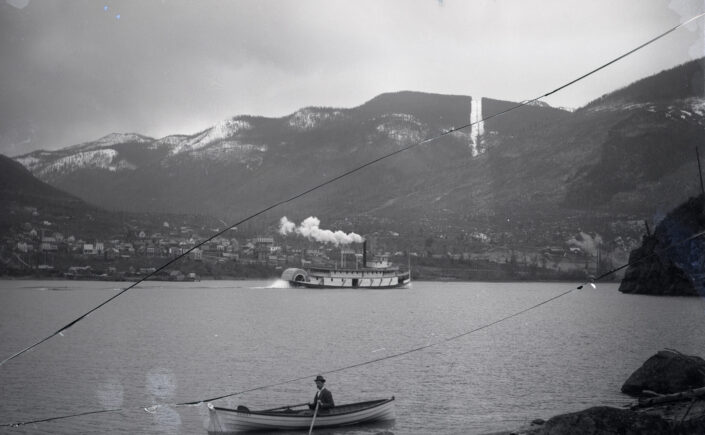Pre-Contact Histories and the Shift Towards a European Outlook on Land, Resources & Labour
The first Indigenous economies in BC were based off of fishing, hunting & trade. In the late 1700’s the first European settlers arrived on the North American continent (Turtle Island) and began to trade with Indigenous populations. It is important to note that the Indigenous populations helped to build the settler colonies and helped Europeans to find gold, coal and other natural resources. In the West Kootenay region specifically, the Ktunaxa and Sinixt people have histories that span over 5,000 years and cover a geographic region of approximately 70,000 square kilometres.
In 1849, coal was first discovered on Vancouver Island, providing a surge of interest in the region for settlers to develop industries on the land. The shift from the natural and self-sufficient nature of the First Nations to the more capitalist and expansionist desires of the settlers began to take place on the land that is now called British Columbia. The dream of wealth and prosperity brought shiploads of people to the port of Victoria beginning in 1858. They had aspirations of striking it big in gold mining. The work was physically challenging and injury, disease and exhaustion were common and very few people actually made a living, let alone a fortune.
In 1876, the Indian Act was instated to assimilate & control Indigenous populations. As previously mentioned, their labour, expertise, and knowledge of the land was integral to the building and prospering of the settler state (the relation soon became asymmetrical with the settlers putting in legislation to effectively control and regulate the people originally on the land). The fallout from these early days of contact still plays out today, with an increasing duty placed on Canadians to understand and unpack the historical foundations of their country. These foundations are largely based on manipulating Indigenous populations for their own profit and expansionist goals, fuelled by a desire for wealth and power, especially through the regions seemingly infinite natural resources.
On the mainland, close to 30,000 people lived in the Cariboo region of BC by the mid 19th Century, as a result of the Cariboo Gold Rush. The Cariboo road, which was built in 1862, helped people to access the Interior and ensured a flow of materials for trade and commerce. Figuring out a way to transport people and resources was integral to the development of the Interior, and the road is definitely regarded as an accomplishment in engineering. The development of the railway also helped to link the Western region of Canada to the East, and further allowed for goods to flow. The work on the railway in BC began in 1880, largely at the hand of underpaid and exploited Chinese workmen. It is said that six men died for every mile of railway that was built. In 1880, about 50,000 people resided in BC, and within only a decade, this number doubled.
In addition to the expansion of roads, the many waterways in BC were put to use by the advent of the flat bottomed steam ship. The resource rich interior of BC could now be accessed by water, and this innovation led to further settlements and communities popping up in the late 19th Century in BC. Mining for lead, coal, zinc and silver helped to economically support early towns in BC, and provided employment and resources for many early settlers. During this period of time, it was normal for towns to come and go, and to this day many ghost towns remain from the attempts of people to create a self sufficient economy, usually through mining. Many towns were unable to survive the instability of these early days, however, a few were able to find ways to survive what would prove to be a very challenging time in world history (WW1 & the Great Depression in particular).
With the advent of mining, the disparity between the working class and their employers, who owned the means of production, became apparent. In the early days, safety and workers rights were nearly non-existent, with twelve hour days being common and death and disease being prevalent in the mines and smelters of the Interior. Companies, whose main goal was profit and growth, were often reluctant to grant workers rights and found alternative forms of labour to carry out work in dangerous conditions (especially from immigrant communities). Fear of deportation and losing their jobs made many immigrants fear joining unions, however, with the work of people such as Ginger Goodwin, workers came to learn of their exploitation and how material conditions could be different through collective solidarity and action.
Only through the work of labour unions and the solidarity of working people did things that we now take for granted, such as the 8 hour work day, or the weekend, become the norm. The fight for fair pay and worker representation took years and several strikes and costed the lives of many who had no protection in the work place. It will be the goal of this section of the Kootenay History website to share some stories about early mining in the region, with a particular focus on labour relations and the story of Ginger Goodwin and Selwyn Blaylock at the Trail smelter.
